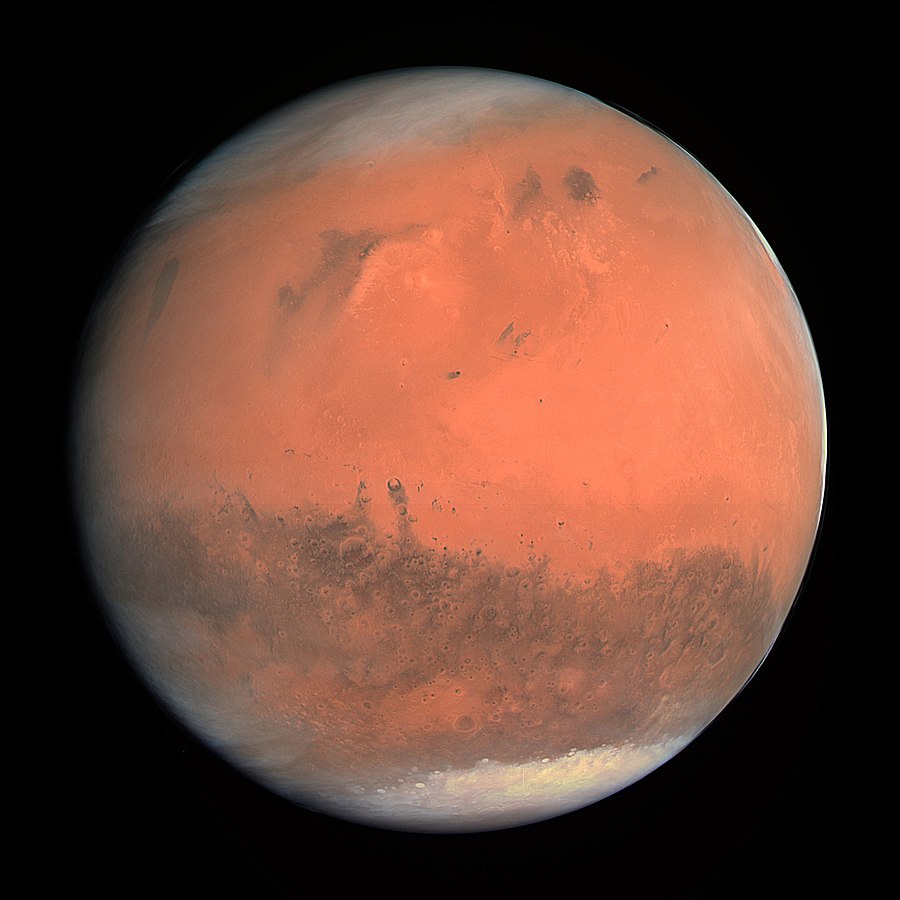NASA funded project research landing heavier vehicles on Mars
Photo Courtesy of European Space Agency
True color image of Mars taken by the OSIRIS instrument on the ESA Rosetta spacecraft during its February 2007 flyby of the planet.
Feb 27, 2019
Researchers at the University have published a study, funded by the NASA Jet Propulsion Laboratory, about landing heavier vehicles on Mars.
Zachary Putnam, assistant professor in Engineering, and former graduate student Christopher Lorenz published the study last December titled, “Entry Trajectory Options for High Ballistic Coefficient Vehicles at Mars.” The study explained methods of steering the vehicle using lift to maximize the amount of mass landed on Mars.
This study raises awareness about space exploration at the University.
“It’s certainly nice publicity for people to realize that we do have people on campus that do this kind of work,” Putnam said, who has his own spacecraft launching in April named SASSI^2.
There are many other studies concerning space happening at the University.
Get The Daily Illini in your inbox!
“I have two ongoing projects funded by NASA, one looking at commercialization of space development and the other looking at utilization of lunar resource for human space missions. Both of them have potentials to be applied to Mars missions,” said Koki Ho, assistant professor in Engineering, in an email.
Flying to Mars has been a popular topic in the news lately with reasons differing among experts. While returning to the Moon or flying to an asteroid are other objectives of NASA, “Mars was the real goal,” Putnam said. These other plans are steps towards finally flying people to Mars.
Mars has been the focus mainly because it is the most hospitable compared to choices such as Venus, which has a surface temperature that can reach over 400 degrees Celsius.
“People could live (on Mars) one day,” Putnam said.
However, many technological improvements must be made before that can be a reality.
“There are many, including entry, descent, landing, efficient and reliable life support systems, etc. For a sustainable exploration, we also need to develop technologies for in-space infrastructure systems for fuel resupply and repair of failed parts,” Ho said.
In addition, humans would have to wear spacesuits constantly and habitats would have to be built underground, Putnam said. As the temperature on Mars is very cold, the planet is exposed to higher levels of radiation, and there’s significantly less atmospheric pressure than on Earth.
Flying to Mars has its risks, such as vital pieces of equipment breaking or malfunctioning, the exposure to radiation during the flight to Mars or having no way to get help in a timely manner when it is required.
NASA is planning on sending to people to Mars in the 2030s. NASA and other private companies will try to reduce as much risk as possible.
“No space travel is 100 percent safe; there are always some risks involved in it,” Ho said.






